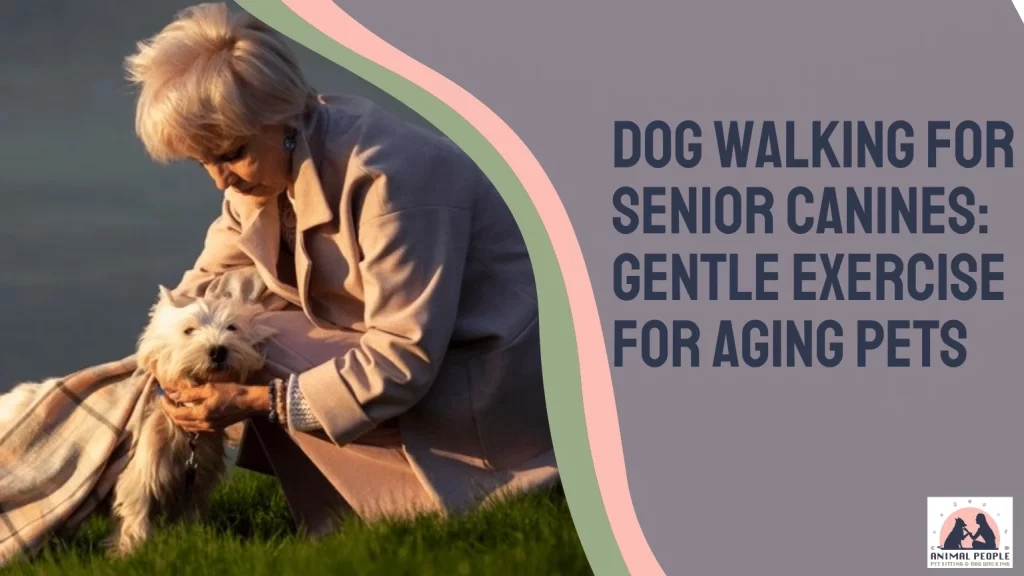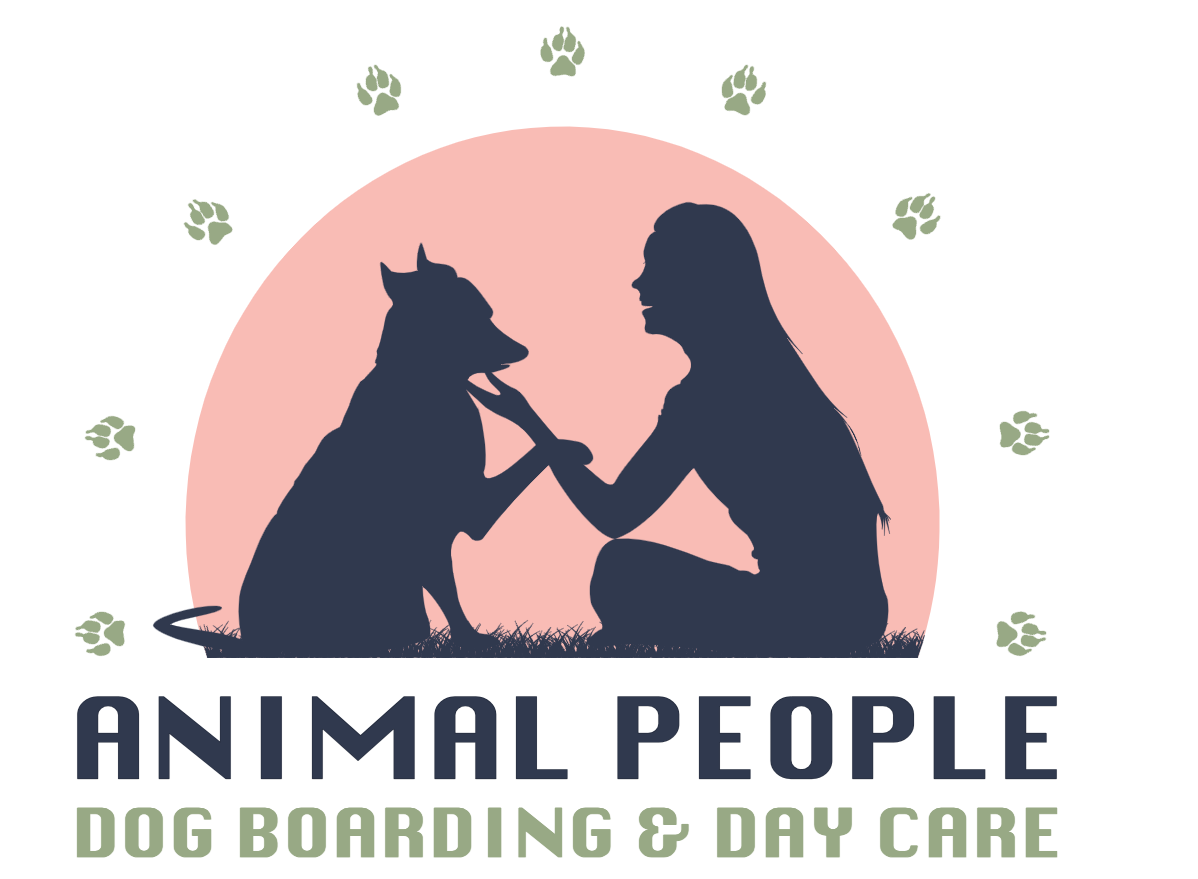Dog Walking for Senior Canines: Gentle Exercise for Aging Pets

As our beloved canine companions enter their senior years, their exercise needs evolve. Tailoring their physical activities to reflect their changing energy levels and mobility becomes essential.
For old dogs, regular gentle walks maintain muscle tone and joint flexibility and stimulate their minds, invigorating their senses with the outdoors’s sights, sounds, and smells. Shorter, more frequent walks are preferable to long excursions, reducing strain on aging limbs while offering exercise and companionship.
When planning walks for an older dog, owners should consider the terrain, avoiding steep inclines or rough paths that might tax their pet’s endurance or balance. Supportive harnesses can provide additional stability and comfort for dogs with joint issues like arthritis.
Most importantly, consistent walking helps senior dogs maintain a healthy weight, supports cardiovascular health, and keeps their daily rhythm predictable, which is comforting for pets in their golden years.
How can dog walking benefit senior canines in terms of their physical and mental well-being?
Dog walking can be incredibly beneficial for senior canines regarding their physical and mental healthy living. The following are a few ways it can improve things them:
- Physical Exercise: Regular walks help senior dogs maintain mobility, flexibility, and muscle tone. This can contribute to better joint health and overall physical fitness, reducing the risk of obesity and related health issues.
- Mental Stimulation: Exploring new environments during walks can stimulate senior dogs, keeping their minds sharp and engaged. It can prevent boredom and alleviate symptoms of anxiety or depression.
- Social Interaction: Encounters with other dogs and people during walks can provide socialization opportunities, which are crucial for a dog’s overall well-being. Social interaction can prevent loneliness and contribute to happiness and contentment.
- Routine and Structure: Establishing a regular walking routine can give senior dogs a sense of regularity and consistency, which could ease and soothe.
- Bonding Time: Walking with their human companions strengthens the bond between senior dogs and their owners, promoting trust, affection, and a sense of security.
Regular dog walking for senior canines promotes physical health, mental stimulation, social interaction, routine, and bonding with their owners, contributing to improved quality of life.
What are some specialized considerations when choosing a dog walker for older dogs, including any potential health concerns?
When selecting a dog walker for an older dog, it’s imperative to find someone who understands the unique needs of senior canines.
A suitable dog walker should be sensitive to health issues that are more common in older dogs, such as arthritis, hearing or vision impairments, and decreased energy levels. They must be prepared to tailor their walking pace and duration to the dog’s comfort level, potentially favoring shorter, more frequent walks over long excursions.
Additionally, the dog walker needs to recognize signs of fatigue or discomfort and know when to give the dog a rest or when to cut a walk short.
Moreover, choosing a dog walker who can handle emergencies is essential, as older dogs might have unpredictable health concerns that could arise suddenly. They should understand basic pet first aid and know the dog’s veterinary information, including any medication schedules.
Clear communication skills are also vital; the dog walker should provide regular updates on their behavior and general well-being during their walks. Trustworthiness and reliability become even more crucial when dealing with a more vulnerable senior dog who may not be able to express discomfort or distress as clearly as younger canines.
Are specific exercise routines or gentle activities recommended for seniors during dog walking sessions?
Based on the information gathered from various sources, exercise routines, and gentle activities recommended for senior dogs during dog walking sessions include:
- Moderate Walks: Taking your senior dog for moderate walks for about 30-60 minutes per day can help maintain their mobility and overall physical health. It’s essential to pay attention to your dog’s pace and adjust the intensity of the walk accordingly.
- Low-Impact Exercises: Consider incorporating low-impact exercises such as swimming, which can be gentle on the joints and provide a full-body workout without putting excessive strain on the legs.
- Gentle Games of Fetch: Engaging in soft games of fetch can be suitable for senior dogs, promoting movement and mental stimulation without overexertion.
- Short and Frequent Sessions: When attempting to increase exercise for senior dogs, it’s recommended to do so in short, 5-minute daily intervals. This approach allows for gradual and comfortable physical activity for older dogs.
- Leash Walks: Leash walks are an excellent low-impact exercise that promotes a healthy body and mind for the dog and the owner. Adjust the pace and distance according to the dog’s physical limitations.
- Strength and Flexibility: Incorporating strength and flexibility moves, such as gentle stretching or balancing exercises, can help maintain the senior dog’s fitness and mobility.
It’s essential to consult with a veterinarian to tailor the exercise routines to the senior dog’s specific needs and health conditions. When tailored to the dog’s needs, regular exercise can contribute to their overall well-being and quality of life.
What signs should pet owners watch to determine if their senior dog benefits from regular dog walking, and how can they adjust the routine accordingly?
Regular dog walking plays a crucial role in maintaining the health and happiness of senior dogs. As dogs age, their needs change and it becomes essential for pet owners to closely observe their senior pets to ensure they benefit from their exercise routine. Here are some signs to watch for and tips on how to adjust the walking routine accordingly:
Signs Your Senior Dog is Benefiting from Regular Walks
- Improved Mobility and Joint Health: Regular, gentle walks can help maintain your senior dog’s mobility and reduce arthritis symptoms or other joint issues. If your dog seems more agile and less stiff after walks, it’s a good sign that exercise is beneficial.
- Consistent Weight Management: Obesity is a common issue in senior dogs, which can exacerbate health problems. If your dog maintains a healthy weight or loses excess weight, the walking routine is likely helping.
- Enhanced Mental Health: Regular walks can also improve your senior dog’s mental health, reducing symptoms of anxiety and depression. If your dog appears more content, relaxed, and mentally stimulated, it indicates a positive impact.
- Better Sleep Patterns: Exercise through walking can help regulate your senior dog’s sleep patterns, leading to more restful nights. The walking routine is likely beneficial if your dog sleeps well throughout the night without restlessness.
- Increased Socialization: Walks allow your dog to interact with other dogs and people, which is essential for their social health. A positive sign is an increased sociable behavior or a keen interest in meeting others during walks.
Adjusting the Walking Routine
If you notice any of the above benefits, it’s clear that your walking routine is working well for your senior dog. However, their abilities and health status may change as they age, necessitating adjustments to their routine.
- Shorter, More Frequent Walks: As stamina decreases, consider shorter but more frequent walks to maintain activity levels without overexertion.
- Pace Adjustment: Pay attention to your dog’s pace and breathing. If they seem to be lagging or panting heavily, slow down. Allow them to set the pace.
- Terrain Consideration: Choose flat, soft terrain to ease the strain on their joints. Avoid steep hills or uneven surfaces that could cause discomfort.
- Weather Consideration: Senior dogs may be more sensitive to extreme temperatures. Walk during more excellent parts of the day in hot weather, and ensure your dog is warm enough in cold conditions.
- Health Monitoring: Regularly consult your veterinarian to monitor your senior dog’s health and adjust the walking routine based on professional advice. This is especially important if your dog has chronic health issues.
- Mental Stimulation: Incorporate mental stimulation into walks by changing routes frequently or including training exercises. This keeps walks exciting and engaging for your senior dog.
Regular dog walking is a beautiful way to enhance your senior dog’s quality of life. By observing the signs of their well-being and making adjustments as needed, you can ensure that your aging pet continues to enjoy the physical, mental, and emotional benefits of their walks throughout their golden years.
Find Joyful Strolls for Your Senior Dog!
At Animal People Pet Sitting & Dog Walking, we understand that every senior dog is a cherished companion with unique needs. Our team is dedicated to creating joyful and comfortable walking experiences tailored to your furry friend’s abilities and health requirements. With tenderness and expertise, we prioritize their well-being, ensuring they relish every step of their golden years.
Let us accompany your dog on their next adventure, where walks are not just walks but moments of pure delight. Contact us to craft a bespoke walking routine for your senior dog – because their happiness is ours.
